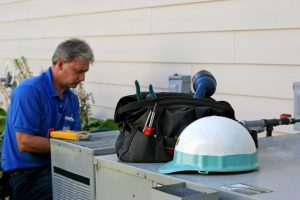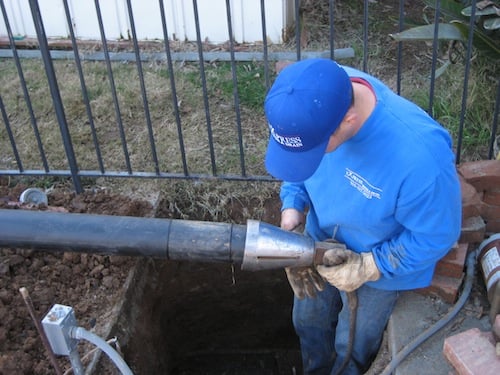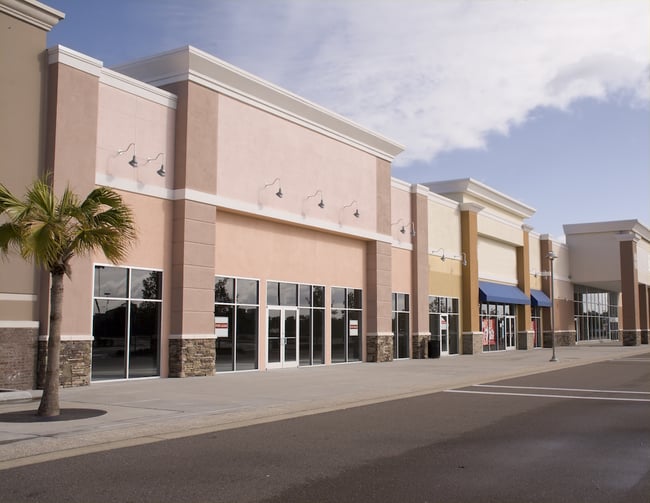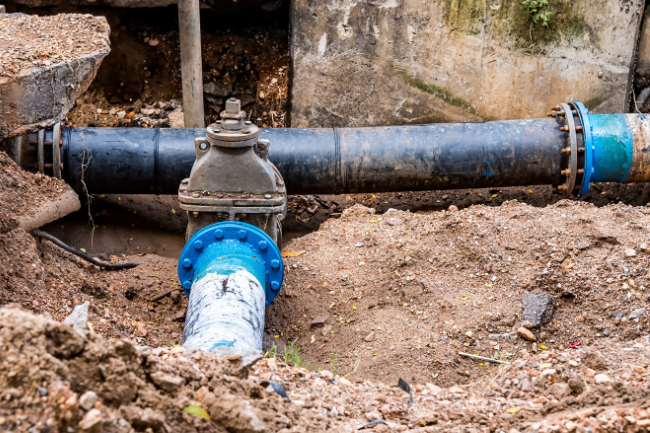Uncover the Risks of Outdated Plumbing and Why Replacement is Essential
In the labyrinth of home maintenance, plumbing often remains out of sight and out of mind—until a significant problem arises. Many Canadian homes, particularly those built before the 2000s, still rely on Polybutylene (Poly B) and galvanized pipes. While these plumbing systems have held up over the decades, they are far from fail-proof and carry risks that could lead to severe home damage and health concerns. This article delves into the hidden dangers associated with outdated plumbing materials and outlines why replacing Poly B and galvanized pipes is critical for maintaining a safe and efficient home environment. We’ll explore the drawbacks of these materials, the potential risks they pose, and the benefits of upgrading to more modern plumbing solutions, ensuring your home’s infrastructure remains robust and reliable.
Recognizing the Risks of Poly B Piping
Polybutylene, commonly referred to as Poly B, was a popular choice for residential plumbing from the 1970s through the mid-1990s in Canada due to its low cost and easy installation. However, over time, it has become evident that Poly B pipes have some inherent drawbacks that can lead to significant plumbing failures. Primarily, these pipes are susceptible to degradation from chlorinated water, which causes them to become brittle and eventually lead to micro-fractures and leaks. Such degradation not only compromises the pipe’s integrity but can also result in sudden bursts, leading to extensive water damage in homes.
Furthermore, the chemical composition of Poly B makes it react adversely to heat. Over time, exposure to hot water can accelerate the pipe’s deterioration, increasing the risk of leaks and bursts. This vulnerability particularly poses a risk in homes where hot water usage is frequent and indispensable.
The Ageing Problem of Galvanized Pipes
Galvanized pipes, constructed from steel and coated with a layer of zinc to prevent rusting, were the standard in home plumbing before Poly B. These pipes are durable when new but have a limited lifespan of about 40 to 50 years. As the zinc coating erodes over time, the underlying steel begins to rust and corrode. This corrosion process builds up rust and debris inside the pipe, which not only causes a decrease in water pressure but also affects the quality of the water, introducing rust particles that can be harmful when ingested.
The corrosion also makes these pipes prone to accumulating mineral deposits that further reduce the diameter through which water can flow. This reduction not only affects water pressure but can also lead to clogs and increased strain on the plumbing system, potentially leading to more serious plumbing issues, including significant leaks and bursts.
The Health and Safety Implications
The risks associated with both Poly B and galvanized pipes extend beyond mere plumbing issues—they can also pose serious health hazards. For instance, as mentioned, corroded galvanized pipes can leach iron and other impurities into the domestic water supply, which over time can significantly affect the water’s taste and color, and potentially pose health risks.
Additionally, pipe leaks can lead to moisture accumulation within home structures, which is a prime breeding ground for mold and mildew. These fungal growths can lead to poor indoor air quality and may trigger allergies, asthma, and other respiratory conditions, especially among children and the elderly.
Furthermore, sudden pipe bursts can cause extensive water damage to a home’s structure and electrics, potentially leading to fire hazards from short-circuited wiring—a risk that underscores the importance of maintaining updated and secure plumbing infrastructures.
Economic Benefits of Modern Piping Materials
The transition to newer plumbing materials such as cross-linked polyethylene (PEX) or copper offers multiple economic benefits. Firstly, both materials have a longer lifespan compared to Poly B and Galvanized Pipes. PEX, for instance, is resistant to scale and chlorine and does not corrode, attributes that extend its operational lifespan significantly. Similarly, copper pipes, although pricier, are highly durable and offer added value from their natural antimicrobial properties.
Additionally, modern plumbing materials are designed to be more efficient. For example, PEX pipes are flexible and can be installed with fewer fittings than rigid plumbing systems, reducing the potential for leaks. Copper pipes, while more rigid, conduct heat well, which can contribute to energy savings in systems that require hot water.
Investing in modern plumbing not only reduces the frequency and costs associated with repairs but also can contribute to potential savings on water bills due to better pressure and fewer leaks. Moreover, many insurance companies offer lower premiums to homes with upgraded plumbing systems due to the reduced risk of water damage.
Proactive Replacement Strategies
Given the risks and potential costs associated with outdated Poly B and galvanized pipes, a proactive approach to plumbing maintenance is advisable. Regular inspections by a professional plumber can help identify potential issues before they escalate into major problems. These inspections should focus on checking for signs of corrosion, leaks, and weak pipe connections.
In situations where replacement is necessary, it’s crucial to choose the right materials and installation methods. Cross-linked polyethylene (PEX) tubing is often recommended for its durability and flexibility, making it especially suited for replacing pipes in older homes where maneuvering new pipes through walls and floors can be challenging. For those who prefer non-plastic solutions, copper remains a preferred choice due to its longevity and recyclability, despite its higher cost.
Engaging with a reputable plumbing service that can provide detailed assessments, recommend appropriate materials, and ensure professional installation is key. This approach not only preserves the structural integrity and safety of your home but also enhances its overall value, ensuring peace of mind for homeowners.
Secure Your Home with Reliable Plumbing Solutions
Addressing the hidden risks associated with outdated Poly B and galvanized pipes is not just a matter of improving your home’s plumbing system—it’s about securing the safety, health, and comfort of your living environment. Upgrading to modern, durable materials can safeguard your home from unexpected failures, enhance water quality, and contribute to substantial long-term savings. Don’t let outdated plumbing compromise your home’s integrity or your family’s wellbeing.
At The Irish Plumber, we specialize in providing top-tier plumbing services in Ottawa, including the assessment and replacement of risky Poly B and galvanized piping. Our expert team is dedicated to ensuring your plumbing system is not only functional but also robust against future challenges. Contact us today to schedule an inspection and take the first step towards a safer and more efficient home. Your peace of mind is just a call away.








